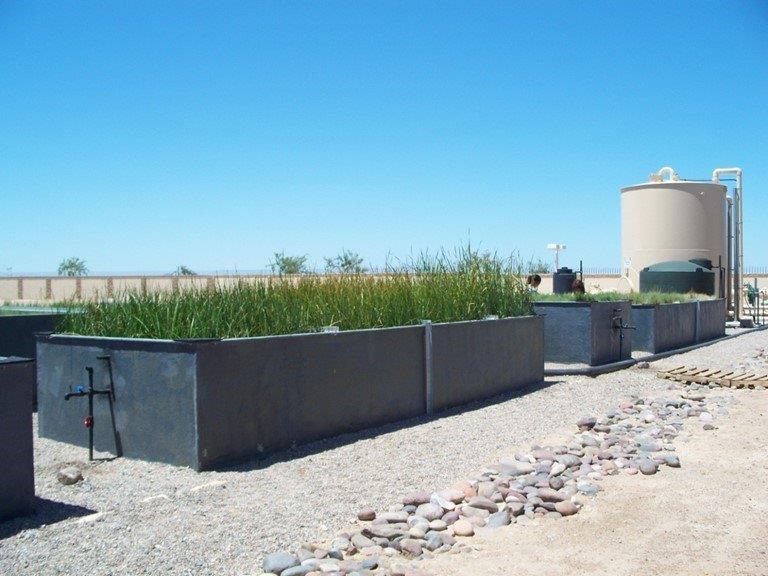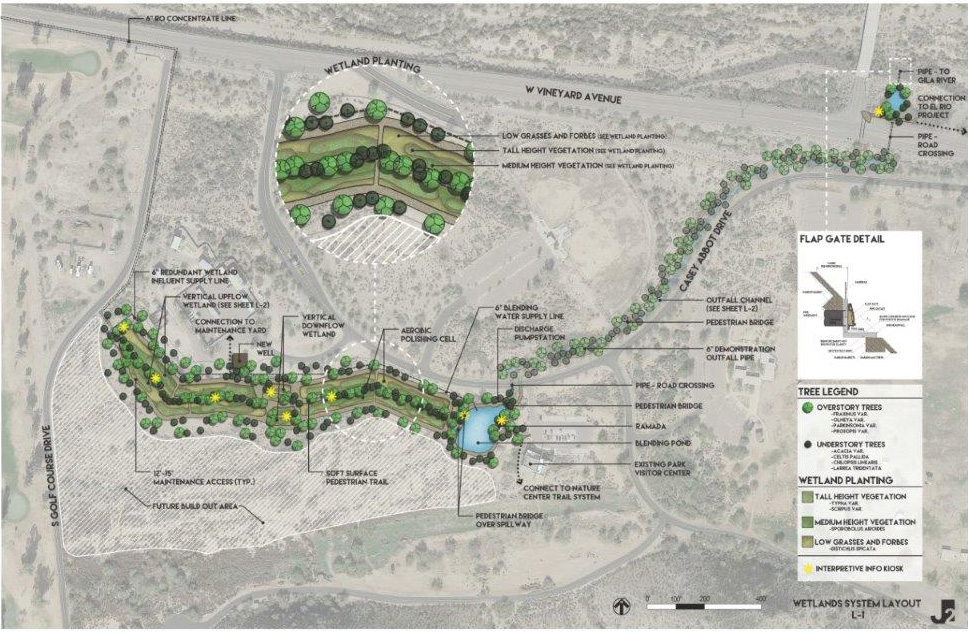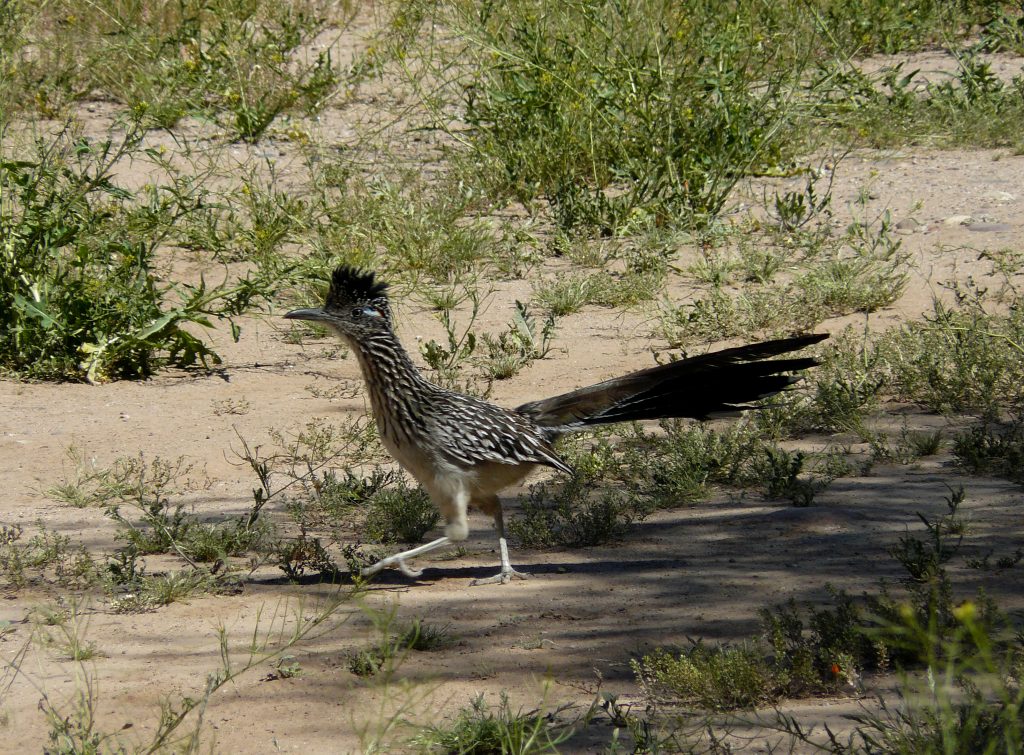The City of Goodyear, Arizona owns and operates the largest reverse osmosis (R/O) system dedicated to producing drinking water within Arizona. This system generates 4.5 million gallons per day (MGD) of R/O water. The downside to being able to produce this clean source of drinking water is that it also generates nearly 1.0 MGD of brine that is chemically impacting the City’s reclamation facility. To solve the challenge of how to dispose of the inland brine, the City took a “One Water” approach to determine the optimal disposal method. In this way of thinking, all water has value, and as such, it should be managed in a sustainable and integrated way. After careful evaluation of the possible options, brine wetlands were elected as having the greatest potential return on investment for the parties involved, including the US Bureau of Reclamation, Maricopa County Flood Control District, Maricopa County Parks Department, and the residents of the City of Goodyear.
THE PILOT
In 2010, the City of Goodyear and the United States Bureau of Reclamation (USBR) signed a cooperative agreement on a pilot project to design, construct, and operate a brine wetland to test the effectiveness of this disposal method. The partners wanted to know if the wetland could remove contaminants (such as selenium, arsenic, fluoride, and nitrates) if this water were to ultimately be discharged into nearby waterways, such as the Gila River. The pilot wetland proved highly successful.

DEMONSTRATION PROJECT
In 2013, the City and the USBR entered into a new cooperative agreement to determine the feasibility of designing a demonstration-sized wetland, to be built in the same location as the pilot wetland. The scope of work included a wetland sizing strategy, sighting analysis, and blending analysis. It also included a 30 percent design concept report for treating 1.0 million gallons per day of brine and blending this water to match the water quality of the Gila River where this water could be permitted for discharge.
FLOOD CONTROL
Maricopa County Flood Control District (MCFCD) was excited by the prospect of having millions of gallons of water that could be perennially discharged into the Gila River. The MCFCD was just developing a new strategy called the El Rio Watercourse Plan for a 19-mile stretch of the Gila River that would restore the riparian area, mitigate flooding, and create a point of destination for recreation, hiking, biking, walking, and birding.
SITING ANALYSIS
The Maricopa County Parks Department was excited to learn that the Estrella Mountain Regional Park was the optimal location for the wetland. A total of 45 acres would be needed to size the wetlands for build-out of the brine disposal. A blending pond at the Park’s visitor center will receive all the water being discharged from the wetlands and could be conveyed north from the Center into the Gila River.

CONCLUSIONS
What started out as a brine disposal problem for the City has transformed into several collaborative solutions benefitting several stakeholders. The USBR can increase the amount of water within the Gila River, a major waterway in Arizona. The Maricopa County Parks Department will enhance their park through new additional recreational opportunities, such as bird watching, hiking, and a newly added attraction for people to see. The Maricopa County Flood Control District can better manage flooding within the Gila River and create a point of destination for this stretch of the waterway. The City will not only benefit by having lower capital costs, as compared to current or traditional methods of brine disposal, but they will also have lower operation and maintenance disposal costs. The use of drying beds is common but leaves a great deal of residual material that has to be sent to the landfill.
Ultimately, the most cost-effective approach is the one that is both earth-friendly and economically sustainable. With the culmination of this project, the City will have a wonderful new park amenity that can be a recreation destination, and a river with many riparian restoration and recreational improvements.
Mark Holmes is a water resources manager with the City of Goodyear, one of 20 Water – Use It Wisely partners to offer water-saving advice and programs.


